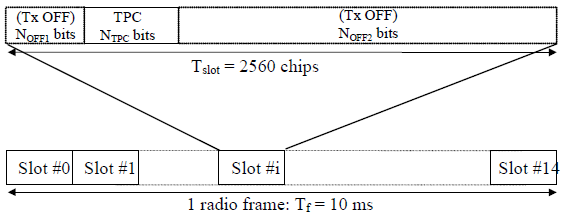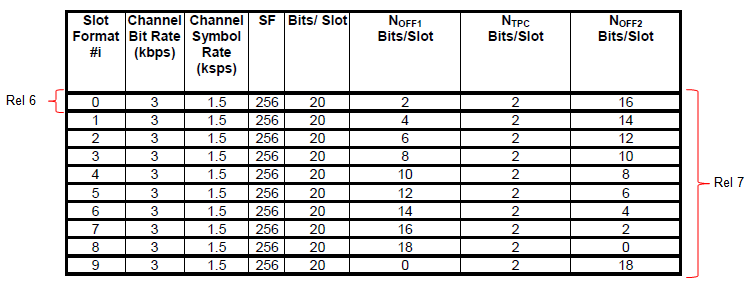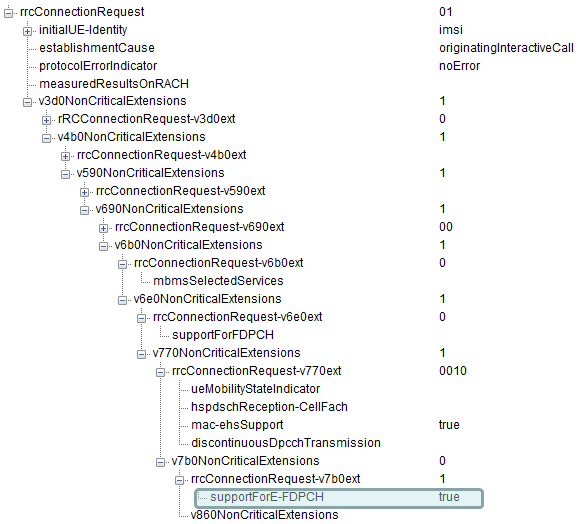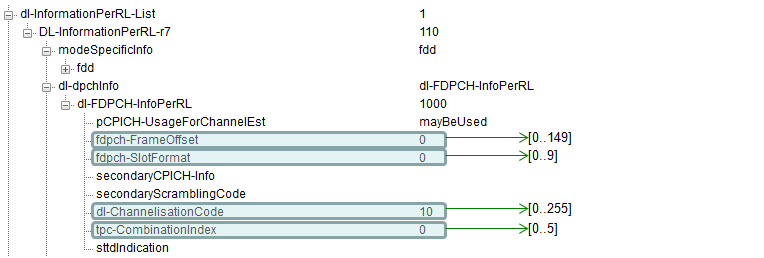|
3G/UMTS |
||
|
F-DPCH
F-DPCH (Fractional DPCH) is a special type of DPCH channel which can transmit only power control signal.
There has been a lot of advantages of introducing HSPA channel for User data. Everybody would undertand we could achieve much higher data throughput with HSPA comparing to R99 channel. In addition, from Release 6, it was allowed to map SRB onto HSPA channel (Shared Channel). With this, we could make TTI for SRB very short and could exchange signaling message in much timely manner. But there is a drawback of relying on these shared channel method. It is about power control issue. You know that one of the critical requirement of WCDMA technology is a very sophisticated power control. If UE power is too low, Node B would have difficulties decoding it and if the power is too strong It can act as a noise to other UEs communicating with the Node B. For this purpose, Node B sends a UE a power control message periodically and this message should be different for all the UE because each UE may be in a different channel condition, meaning this power control message should be a "Dedicated" message. But as I explained HS-DSCH is a shared channel. Then how can Node B deliver the power control message for each specific UE. The solution was to useR99 dedicated channel (DPCH) carrying only the power control message. But using a full DPCH only for carrying a small power control message is waste of resource. The most important resources that Network would like to save would be 'OVSF (Orthogonal Variable Spreading Factor) Code' which is very limitted. Spreading Factor (SF) for DPCCH is 256 which may seem looks a lot. But since the SF for any HSDPA channel is 16. Any DPCCH spreading code which fall into a HSDPA channelization code may break the whole HSDPA channel. To improve this situation, from Release 6 a new channel was introduced and it is F-DPCH (Fractional DPCH). The main motivation is to let allocate single channelization code to multiple UEs. In 3GPP spec, it is allowed to allocate a single channelization code to max 10 UEs.
Frame Structure of F_DPCH is as follows. (Refer to 3GPP 25.211 Figure 12B: Frame structure for F-DPCH). As you see, each of the slots carries only TPC bits and the remaining part (originally allocated for user data) is off.
Then you may have question. If network allocates a same channelization code to multiple UEs, how a UE can figure out the TPC is for itself or for some other UE. Network uses another indicator for further UE specification and it is Frameoffset. It means even though a Network can allocate a single code to10 different, UE can use detect its own TPC command with using Frameoffset.
Following is the slot format for F_DPCH (Refer to 25.211 Table 16C: F-DPCH fields). In Rel 6 when F-DPCH is first introduced, only one slotformat was supported. But in Rel 7 many additional slot formats were introduced.
Key Parameters for F_DPCH in RRC message from UE are as follows.
Key Parameters for F_DPCH in RRC message (Usually in Radio Bearer Setup) from Network are as follows.
Precondition for F-DPCH
Followings are the list of preconditions for F-DPCH. Enabling F-DPCH means disabling ordinary DPDCH channel, you may easily understand why following precondition should be met.
|
||




